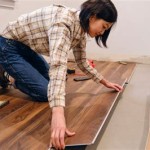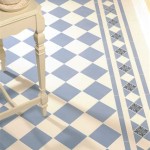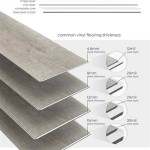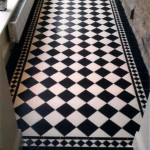Tall Floor Sculpture: Elevating Living Room Aesthetics
Tall floor sculptures represent a powerful element in interior design, capable of transforming a living room from a functional space into a gallery-like environment. These sculptures function as both art pieces and architectural accents, lending height, visual interest, and a distinct personality to the room. Their presence can define the overall aesthetic, influence the perceived size and layout, and serve as a captivating focal point. The selection and placement of a tall floor sculpture require careful consideration of style, scale, material, and the existing design elements within the living room to achieve a harmonious and impactful result.
The allure of a tall floor sculpture lies in its ability to command attention and create a sense of drama. Unlike smaller decorative objects that might blend into the background, a tall sculpture becomes an undeniable feature, shaping the atmosphere and sparking conversation. Its verticality draws the eye upward, creating an illusion of increased height and making the room feel more expansive. The sculpture's form, texture, and color interact with the surrounding light, generating dynamic shadows and adding depth to the space. The selection process should involve a thorough analysis of the room's dimensions, existing furniture, and desired aesthetic to ensure the sculpture complements and enhances the overall design.
Key Considerations When Choosing a Tall Floor Sculpture
Selecting a tall floor sculpture involves several crucial considerations to ensure it seamlessly integrates into the living room environment and achieves the desired artistic impact. These considerations encompass the style and material of the sculpture, its scale in relation to the room's dimensions, and its placement to maximize visual appeal and balance.
Sculpture Style and Material: The style of the sculpture should align with the overall design aesthetic of the living room. A modern, minimalist living room might benefit from a sleek, abstract sculpture crafted from metal or glass. Conversely, a more traditional or rustic living room could accommodate a figurative sculpture made of wood, stone, or bronze. The material of the sculpture plays a significant role in its visual impact and durability. Metal sculptures can offer a contemporary feel and resist wear and tear, while wooden sculptures bring warmth and natural texture. Stone sculptures exude a sense of permanence and sophistication, while glass sculptures can create a delicate and ethereal ambience. The choice of material should reflect the desired aesthetic and the level of maintenance required.
Scale and Proportion: The size of the sculpture must be proportionate to the dimensions of the living room. A sculpture that is too large can overwhelm the space, making it feel cramped and unbalanced. Conversely, a sculpture that is too small might get lost in the room and fail to make a significant impact. The height of the ceiling should also be considered when determining the appropriate height of the sculpture. In rooms with high ceilings, a taller sculpture can be used to emphasize the verticality of the space. In rooms with lower ceilings, a slightly shorter sculpture might be more suitable to avoid creating a sense of claustrophobia. It is often helpful to use painter's tape or cardboard to mock up the approximate size of the sculpture in the room to visualize its presence and ensure it complements the existing furniture and architectural features.
Placement and Positioning: The placement of the sculpture is critical to its visual impact. It should be positioned in a location that allows it to be viewed from multiple angles and that doesn't obstruct walkways or create unnecessary congestion. A corner of the room can be an ideal spot for a tall sculpture, as it can add visual interest to an otherwise unused space. Alternatively, the sculpture can be placed against a blank wall to create a focal point. The lighting in the room should also be considered when determining the placement of the sculpture. Natural light can enhance the texture and color of the sculpture, while strategically placed artificial lighting can create dramatic shadows and highlight its form. It is also important to consider the background of the sculpture. A simple, uncluttered background will allow the sculpture to stand out and command attention, while a busy or distracting background can detract from its visual impact.
Material Choices in Tall Floor Sculpture
The selection of materials for tall floor sculptures is extensive, encompassing a variety of natural and synthetic options each offering distinct aesthetic qualities, durability characteristics, and artistic possibilities. The material choice significantly influences the sculpture's visual impact, its ability to complement existing decor, and its suitability for the intended environment.
Metal: Metal sculptures are often associated with modern and contemporary design. Steel, stainless steel, aluminum, and bronze are common choices, each offering unique properties. Steel provides strength and affordability, while stainless steel offers corrosion resistance and a sleek appearance. Aluminum is lightweight and easily shaped, making it suitable for intricate designs. Bronze is a classic material valued for its rich patina and durability. Metal sculptures can be finished in a variety of ways, including polishing, brushing, painting, or powder coating, to achieve the desired aesthetic. Metal sculptures are generally durable and easy to maintain, making them a practical choice for high-traffic areas.
Wood: Wood sculptures bring warmth, texture, and a natural element into the living room. A variety of wood species can be used, including oak, maple, walnut, and exotic hardwoods. The choice of wood depends on the desired color, grain pattern, and durability. Wood sculptures can be carved, sculpted, or constructed from assembled pieces. They can be finished with a clear coat to enhance the natural beauty of the wood or painted to achieve a more contemporary look. Wood sculptures require more maintenance than metal sculptures, as they are susceptible to moisture damage and insect infestation. They should be protected from direct sunlight and humidity to prevent warping or cracking.
Stone: Stone sculptures exude a sense of permanence and sophistication. Marble, granite, limestone, and sandstone are common choices, each offering unique textures and colors. Marble is known for its smooth, polished surface and elegant appearance. Granite is a durable and weather-resistant material that can be used for both indoor and outdoor sculptures. Limestone is a softer stone that is easily carved and sculpted. Sandstone offers a more rustic and textured appearance. Stone sculptures are generally heavy and require a sturdy base for support. They are also relatively porous and should be sealed to prevent staining and water damage.
Glass: Glass sculptures offer a delicate and ethereal beauty. They can be crafted from clear glass, colored glass, or fused glass, creating a wide range of visual effects. Glass sculptures can be blown, cast, or sculpted. They can be transparent, translucent, or opaque. Glass sculptures are fragile and require careful handling. They should be placed in a location where they are unlikely to be bumped or knocked over. They should also be protected from direct sunlight, as prolonged exposure can cause them to fade or discolor.
Composite Materials: In addition to natural materials, tall floor sculptures can also be made from composite materials, such as resin, fiberglass, or concrete. These materials offer a combination of durability, versatility, and affordability. Resin sculptures can be molded into intricate shapes and finished in a variety of colors and textures. Fiberglass sculptures are lightweight and weather-resistant, making them suitable for both indoor and outdoor use. Concrete sculptures are strong and durable, offering a rustic and industrial aesthetic.
Integrating the Sculpture with the Living Room Design
The successful integration of a tall floor sculpture into a living room design requires a holistic approach that considers the existing color palette, furniture arrangement, and overall style of the space. The sculpture should not only be a visually appealing object but also contribute to the overall harmony and balance of the room.
Color Palette Harmony: The color of the sculpture should complement the existing color palette of the living room. If the room features a neutral color scheme, a sculpture with a bold color or a striking metallic finish can add a pop of visual interest. Conversely, if the room is already adorned with vibrant colors, a sculpture with a more muted or neutral tone can provide a sense of calm and balance. The sculpture's color can also be used to tie together different elements in the room. For example, if the room features a rug with a specific color accent, the sculpture could incorporate that same color to create a cohesive look.
Furniture Arrangement and Flow: The placement of the sculpture should be carefully considered in relation to the furniture arrangement. The sculpture should not obstruct walkways or create unnecessary congestion. It should be positioned in a location where it can be viewed from multiple angles and where it complements the existing furniture. A tall floor sculpture can be used to define different zones within the living room. For example, it can be placed near a seating area to create a focal point or near a doorway to define the entrance to the room. The sculpture should also be positioned in a way that allows it to interact with the natural light in the room. Sunlight can enhance the texture and color of the sculpture, creating dynamic shadows and adding depth to the space.
Lighting and Ambiance: The lighting in the living room plays a crucial role in highlighting the sculpture's features and creating the desired ambiance. Strategically placed spotlights or accent lights can illuminate the sculpture, emphasizing its form and texture. Dimmer switches can be used to adjust the intensity of the lighting, allowing for different moods to be created. The type of lighting used can also affect the appearance of the sculpture. Warm lighting can create a cozy and inviting atmosphere, while cool lighting can create a more modern and sophisticated look. Consider the interplay of light and shadow on the sculpture's surface throughout the day to optimize its visual impact.
Balancing Minimalism and Maximalism: The integration of a tall floor sculpture can contribute to either a minimalist or maximalist design aesthetic, depending on the overall approach. In a minimalist living room, the sculpture can serve as a statement piece, adding visual interest to an otherwise uncluttered space. The sculpture should be carefully chosen to complement the clean lines and simple forms of the minimalist design. In a maximalist living room, the sculpture can be incorporated into a more eclectic and layered design. The sculpture can be used to add texture, color, and visual interest to a room that is already filled with a variety of decorative objects.
Personal Expression and Artistic Vision: Ultimately, the integration of a tall floor sculpture into a living room design should reflect the homeowner's personal taste and artistic vision. The sculpture should be a piece that the homeowner loves and that adds to the overall enjoyment of the space. The sculpture can be used to express the homeowner's personality and to create a living room that is both beautiful and functional.

Litton Lane Black Aluminum Tall Linked Floor Abstract Sculpture With Base 043354 The Home

700mm Large Glam Peacock Floor Sculpture Decor Art Living Room Bedroom In Blue Gold Homary

Abstract Art Sculpture For Living Room Nordic Luminous Floor Statue Home Decor Ornament Housewarming Gift Interior Figurine

Floor Standing Statue For Living Room

Modern Metal Large Sculpture For Living Room Ssa 049

Imagine Modern Floor Sculpture

Floor Sculpture Lamps Aurtem

Finesse Decor Chrome Flame Floor Sculpture With Wood Stand 65 Tall

Ocean Blue Cortes Bay Wave Floor Sculpture With Black Stand 57 Tall

700mm Large Glam Peacock Floor Sculpture Decor Art Living Room Bedroom In White Pink







